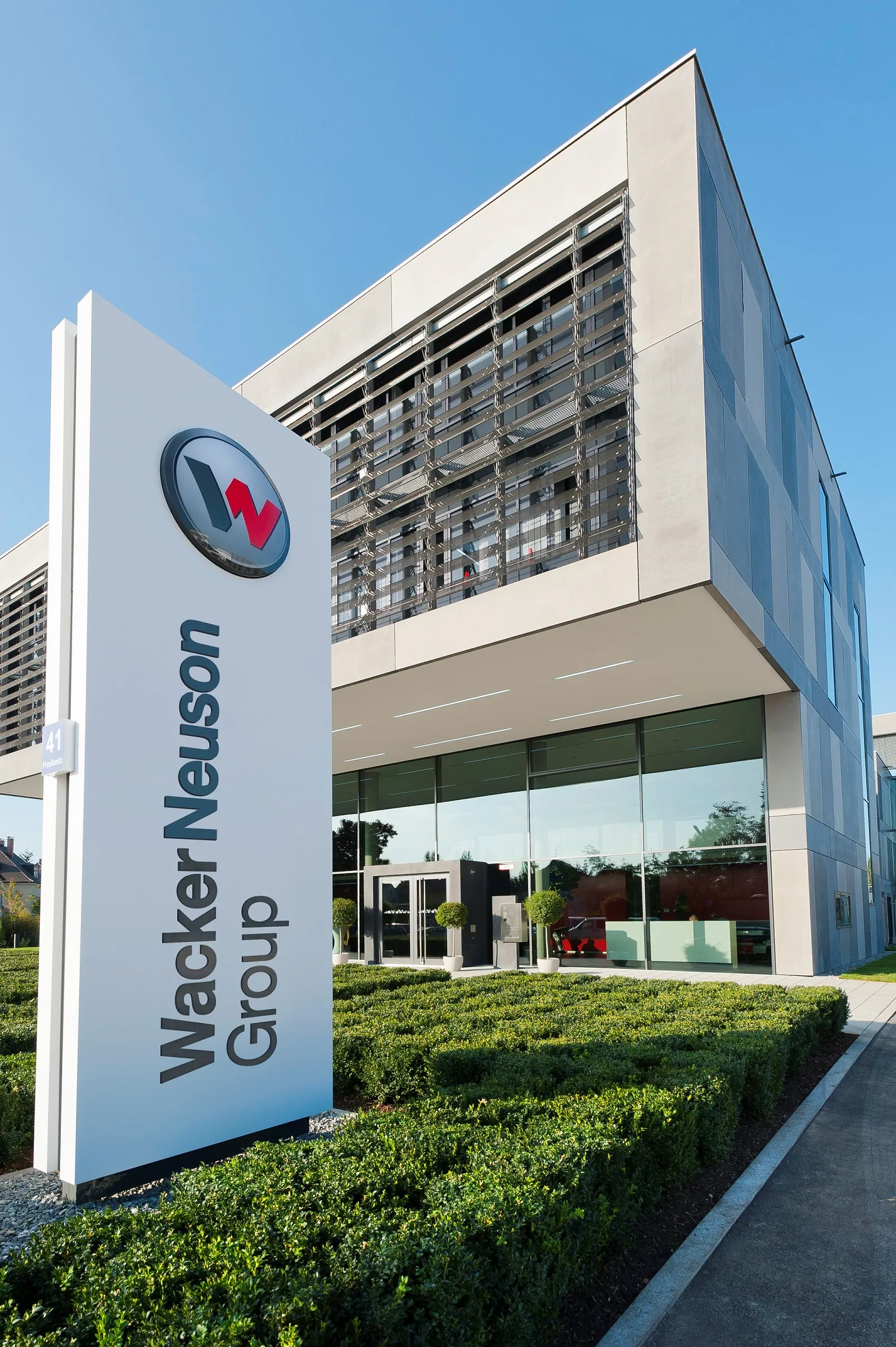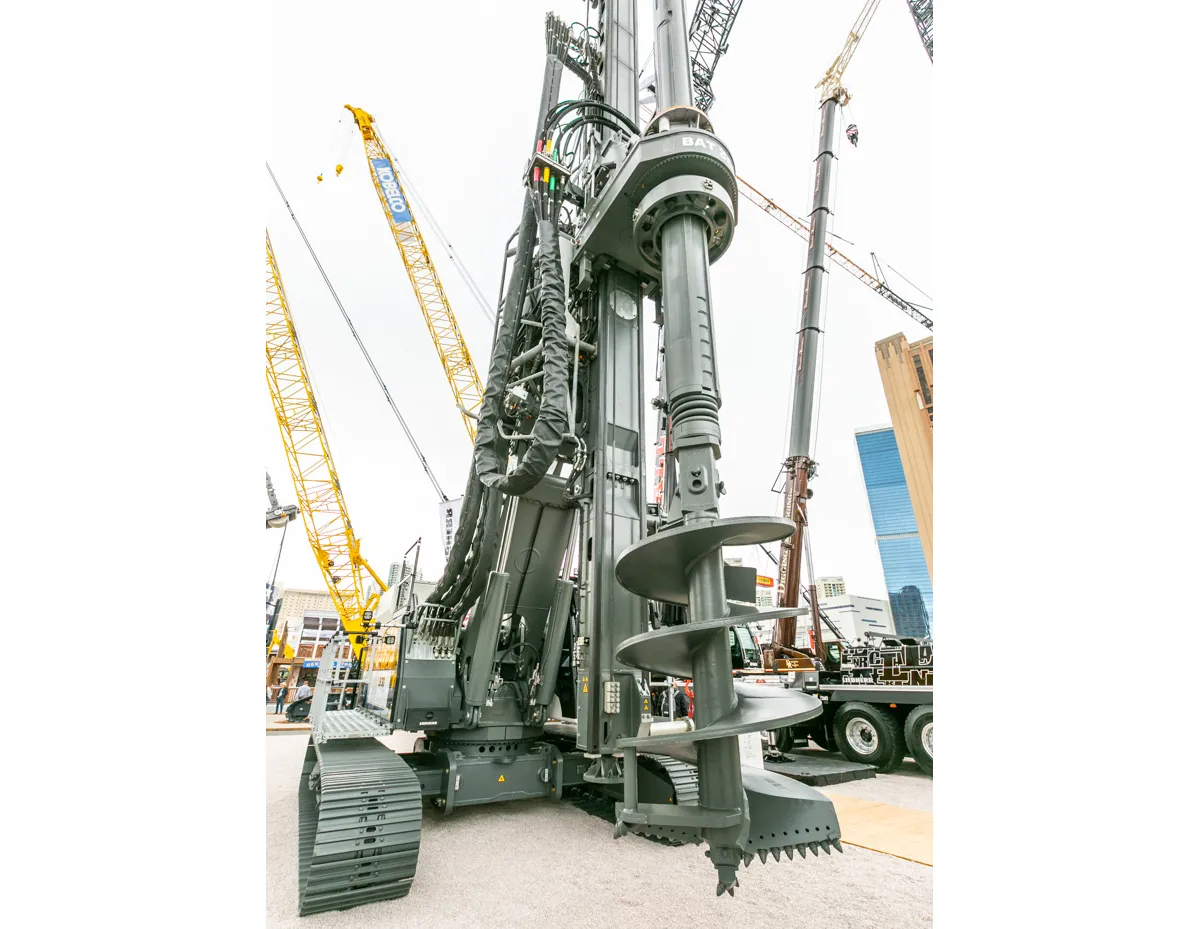The Wacker Neuson Group is reporting a strong third quarter performance for 2017. The company’s latest results reveal a marked increase in revenue and earnings and says it remains positive about the fourth quarter of 2017. Wacker Neuson says it expects its revenue and earnings forecast for the current fiscal year to come in at the higher end of previous forecasts.
The Wacker Neuson Group reported revenue of € 378.7 million for the third quarter of 2017. This corresponds to an increase of 20% over the €315.
November 10, 2017
Read time: 4 mins

The 1651 Wacker Neuson Group is reporting a strong third quarter performance for 2017. The company’s latest results reveal a marked increase in revenue and earnings and says it remains positive about the fourth quarter of 2017. Wacker Neuson says it expects its revenue and earnings forecast for the current fiscal year to come in at the higher end of previous forecasts.
The Wacker Neuson Group reported revenue of € 378.7 million for the third quarter of 2017. This corresponds to an increase of 20% over the €315.7 million of the same period in the previous year. “There is no doubt that we were buoyed by strong markets in North America and Europe. However, it was the successful implementation of our growth strategy that really enabled us to outgrow the market,” said Martin Lehner, CEO of the Wacker Neuson Group.
Profit before interest and tax (EBIT) nearly doubled to reach €40.0 million, compared with €20.4 million for the same period in 2016. This resulted in an EBIT margin of 10.6% against 6.5% for the same period in 2016.
The third quarter is typically a high-margin period and all three operational business segments (light equipment, compact equipment and services) reported a rise in revenue relative to the prior-year quarter. Revenue in the light equipment segment rose 14%, while the compact equipment and services segments reported increases of 27% and 11% respectively. “The need among international rental companies to catch up on equipment stock levels fuelled a significant increase in sales of light equipment, especially of generators and light towers. Growth in the compact equipment segment was driven by our ongoing success in the material handling business field in the European construction and agricultural sectors as well as by an expected upswing in sales of skid steer loaders manufactured in North America,” said Lehner.
The Group’s largest market, Europe, which accounts for around 75% of revenue, reported a 17% rise in revenue for the third quarter compared with the prior-year period. Revenue remained on a strong growth path in the Americas. This region reported major revenue gains in worksite technology, skid steer loaders produced in the US, and compact equipment imported from Europe. In the third quarter, revenue for the region increased by 32% relative to the previous year. The US, Canada and most South American countries reported revenue gains. In Asia-Pacific, revenue for the third quarter rose 14%, with Australia emerging as the main growth driver. The Group is currently building a new factory for compact equipment in the Chinese city of Pinghu, near Shanghai. It plans to start manufacturing compact excavators for the Chinese market here from the first quarter of 2018 onwards.
Revenue for the first nine months of the year rose 13% to reach a new record high of € 1.1424 billion compared with € 1.0135 billion for the previous year. EBIT improved 42% to € 101.0 million while the EBIT margin amounted to 8.8%, as against €71.1 million; and 7% for the previous year. Revenue growth, internal process improvements and strict cost control measures all had a positive impact on earnings. In addition, some of the projects initiated in the last two years to improve the Group’s competitive position are starting to show dividends. These include the relocation of skid steer loader production from Austria to the US, and investments in innovations such as its fully electric zero emission portfolio of light and compact equipment.
Fueled by strong profit before tax and an improved net working capital structure, cash flow from operating activities rose 26% to €74 million compared with €59 million in 2016. At €50 million, free cash flow improved 46% relative to the prior-year quarter at €35 million.
“Our order books are full and we expect business to continue on its positive trajectory through the end of the year,” explained Lehner.
The company has reaffirmed its revenue forecast for the year as a whole. It now expects revenue for fiscal 2017 to come in at the higher end of its previous forecast range of €1.45-1.5 billion or possibly even to exceed this figure slightly. This corresponds to a rise of more than 10% compared with the previous year. The EBIT margin is also expected to reach the upper end of the current forecast of 7.5-8.5%.
The Wacker Neuson Group reported revenue of € 378.7 million for the third quarter of 2017. This corresponds to an increase of 20% over the €315.7 million of the same period in the previous year. “There is no doubt that we were buoyed by strong markets in North America and Europe. However, it was the successful implementation of our growth strategy that really enabled us to outgrow the market,” said Martin Lehner, CEO of the Wacker Neuson Group.
Profit before interest and tax (EBIT) nearly doubled to reach €40.0 million, compared with €20.4 million for the same period in 2016. This resulted in an EBIT margin of 10.6% against 6.5% for the same period in 2016.
The third quarter is typically a high-margin period and all three operational business segments (light equipment, compact equipment and services) reported a rise in revenue relative to the prior-year quarter. Revenue in the light equipment segment rose 14%, while the compact equipment and services segments reported increases of 27% and 11% respectively. “The need among international rental companies to catch up on equipment stock levels fuelled a significant increase in sales of light equipment, especially of generators and light towers. Growth in the compact equipment segment was driven by our ongoing success in the material handling business field in the European construction and agricultural sectors as well as by an expected upswing in sales of skid steer loaders manufactured in North America,” said Lehner.
The Group’s largest market, Europe, which accounts for around 75% of revenue, reported a 17% rise in revenue for the third quarter compared with the prior-year period. Revenue remained on a strong growth path in the Americas. This region reported major revenue gains in worksite technology, skid steer loaders produced in the US, and compact equipment imported from Europe. In the third quarter, revenue for the region increased by 32% relative to the previous year. The US, Canada and most South American countries reported revenue gains. In Asia-Pacific, revenue for the third quarter rose 14%, with Australia emerging as the main growth driver. The Group is currently building a new factory for compact equipment in the Chinese city of Pinghu, near Shanghai. It plans to start manufacturing compact excavators for the Chinese market here from the first quarter of 2018 onwards.
Revenue for the first nine months of the year rose 13% to reach a new record high of € 1.1424 billion compared with € 1.0135 billion for the previous year. EBIT improved 42% to € 101.0 million while the EBIT margin amounted to 8.8%, as against €71.1 million; and 7% for the previous year. Revenue growth, internal process improvements and strict cost control measures all had a positive impact on earnings. In addition, some of the projects initiated in the last two years to improve the Group’s competitive position are starting to show dividends. These include the relocation of skid steer loader production from Austria to the US, and investments in innovations such as its fully electric zero emission portfolio of light and compact equipment.
Fueled by strong profit before tax and an improved net working capital structure, cash flow from operating activities rose 26% to €74 million compared with €59 million in 2016. At €50 million, free cash flow improved 46% relative to the prior-year quarter at €35 million.
“Our order books are full and we expect business to continue on its positive trajectory through the end of the year,” explained Lehner.
The company has reaffirmed its revenue forecast for the year as a whole. It now expects revenue for fiscal 2017 to come in at the higher end of its previous forecast range of €1.45-1.5 billion or possibly even to exceed this figure slightly. This corresponds to a rise of more than 10% compared with the previous year. The EBIT margin is also expected to reach the upper end of the current forecast of 7.5-8.5%.







